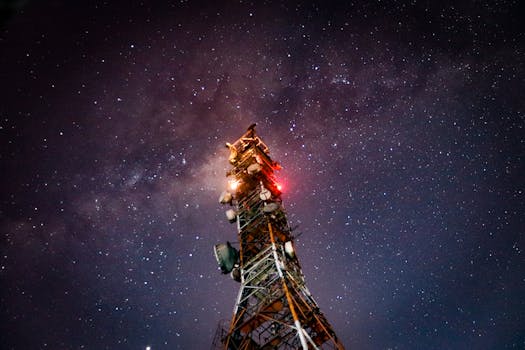
Starlink: Revolutionizing Global Internet Connectivity with Satellite Technology
Starlink is a satellite constellation developed by SpaceX, a private aerospace manufacturer and space transport services company founded by Elon Musk. The project aims to provide high-speed, low-latency internet connectivity worldwide, especially in areas where traditional fiber-optic cables are not feasible or cost-effective. By leveraging advanced satellite technology, Starlink seeks to bridge the digital divide and transform the way we communicate, access information, and conduct business.
The concept of Starlink was first announced in 2015, with the goal of creating a network of low-Earth orbit (LEO) satellites that would provide global internet coverage. Since then, SpaceX has made significant progress in developing and launching the Starlink constellation. As of 2022, over 2,000 Starlink satellites have been launched, with plans to deploy up to 42,000 satellites in the coming years.
Each Starlink satellite is equipped with advanced technology, including Hall effect thrusters, ion engines, and a sophisticated communication system. The satellites are designed to operate in LEO, approximately 550 kilometers above the Earth’s surface, which allows for faster data transmission and lower latency compared to traditional geostationary satellites. The Starlink constellation is designed to provide a wide range of services, including internet connectivity, voice over internet protocol (VoIP), and data transfer.
The potential impact of Starlink on global connectivity is significant. According to the International Telecommunication Union (ITU), approximately 3.8 billion people, or 47% of the world’s population, lack access to the internet. Starlink aims to bridge this gap by providing affordable and reliable internet connectivity to underserved communities, remote areas, and developing countries. By doing so, Starlink can help promote economic growth, improve education, and enhance healthcare outcomes.
Starlink has already partnered with several organizations and governments to provide internet connectivity to underserved communities. For example, in 2020, SpaceX announced a partnership with the Microsoft Corporation to provide Starlink internet connectivity to rural communities in the United States. Similarly, Starlink has partnered with the government of Papua New Guinea to provide internet connectivity to remote areas of the country.
Despite its potential, Starlink also faces several challenges and criticisms. One of the main concerns is the risk of satellite congestion and interference with other satellite systems. As the number of satellites in LEO increases, there is a growing risk of collisions and interference, which could have significant consequences for the entire satellite industry. Additionally, there are concerns about the environmental impact of launching thousands of satellites into space, including the potential for space debris and the disruption of astronomical observations.
To address these concerns, SpaceX has developed several mitigations, including a debris removal system and a plan to de-orbit satellites at the end of their lifespan. The company is also working with regulatory agencies, such as the Federal Communications Commission (FCC), to ensure that Starlink complies with all relevant laws and regulations.
In conclusion, Starlink is a revolutionary satellite constellation that has the potential to transform global internet connectivity. By providing high-speed, low-latency internet connectivity to underserved communities and remote areas, Starlink can help bridge the digital divide and promote economic growth, education, and healthcare outcomes. While there are challenges and criticisms associated with the project, SpaceX is working to address these concerns and ensure that Starlink is a responsible and sustainable solution for global connectivity.

